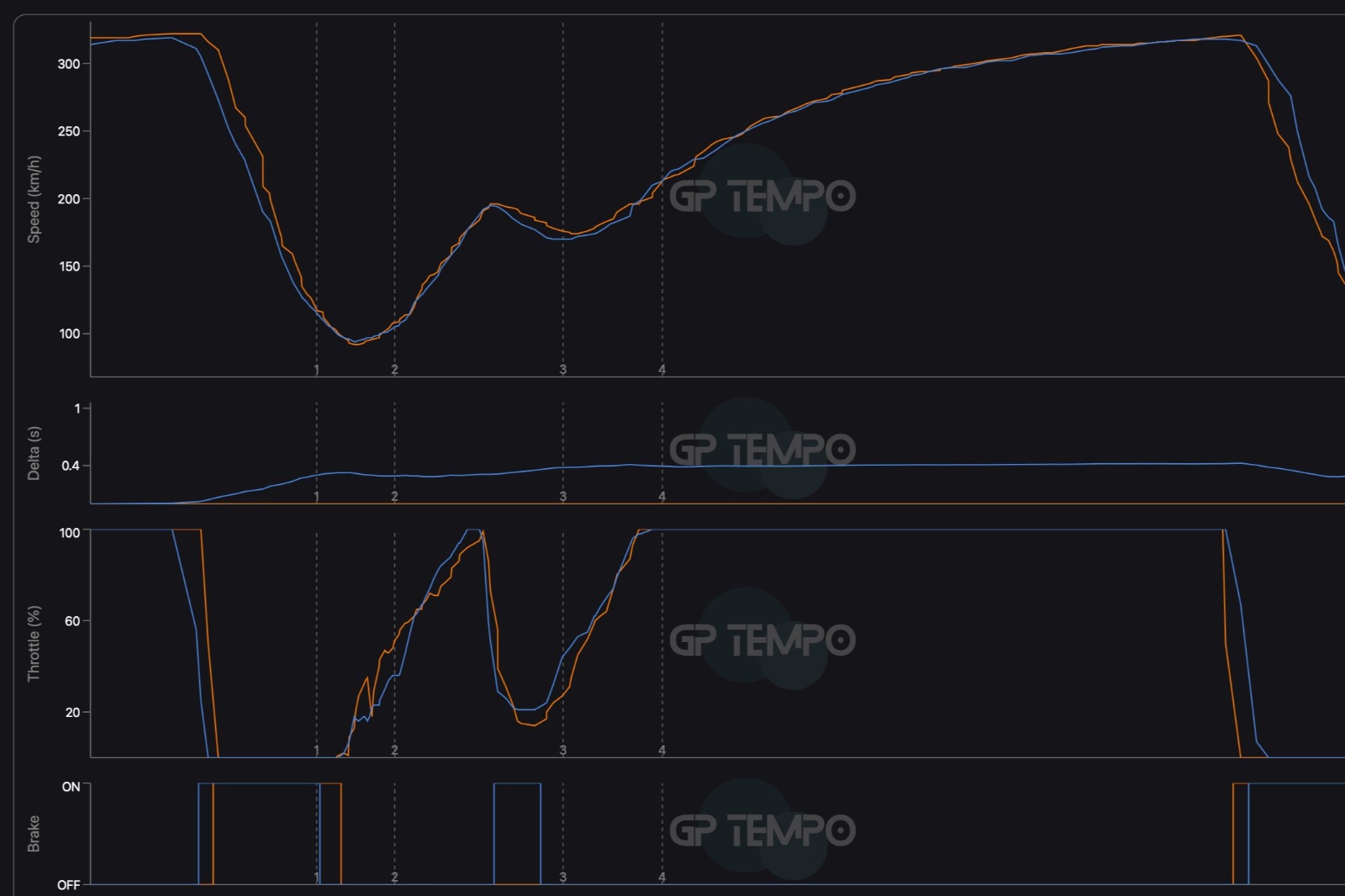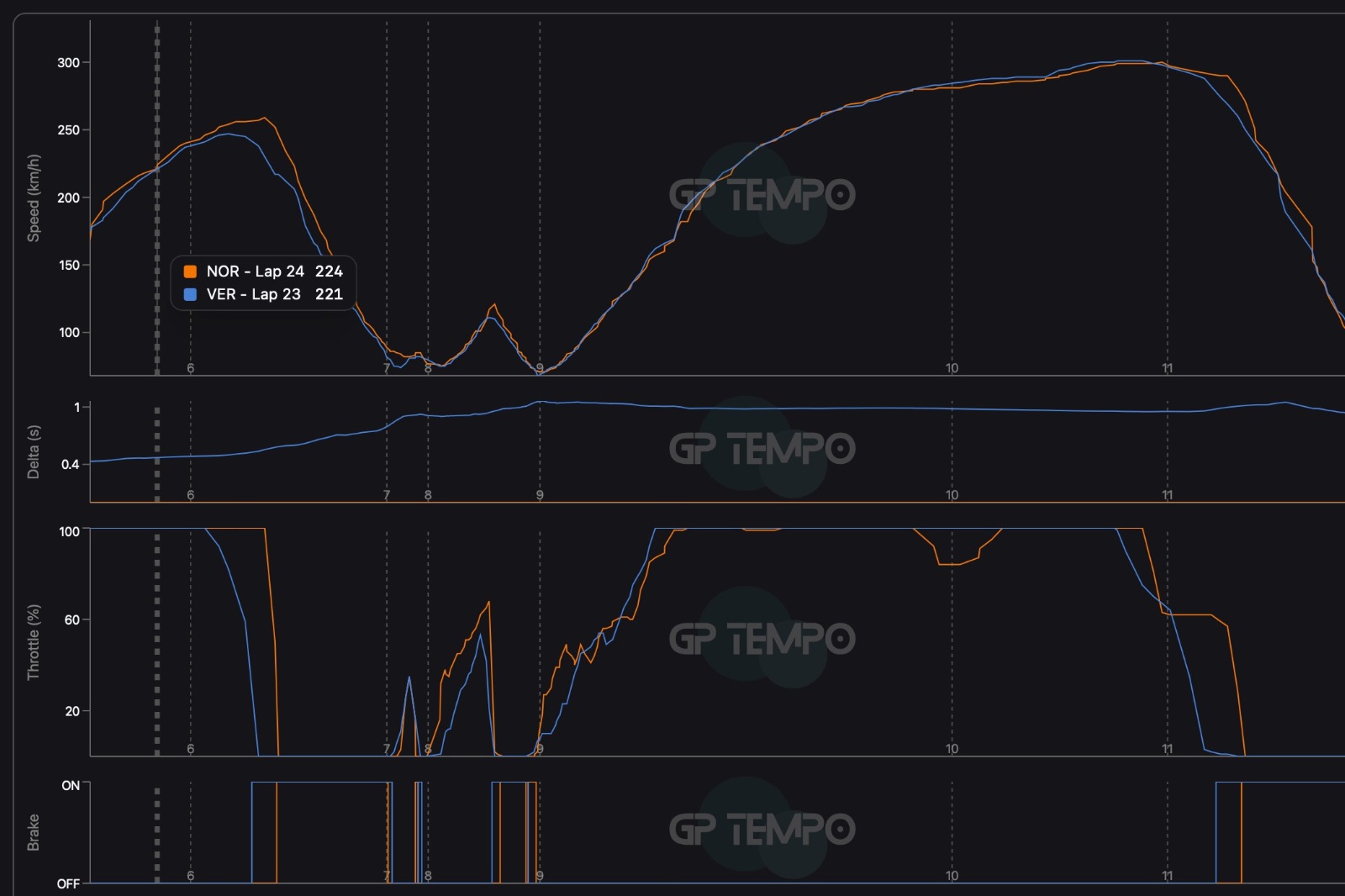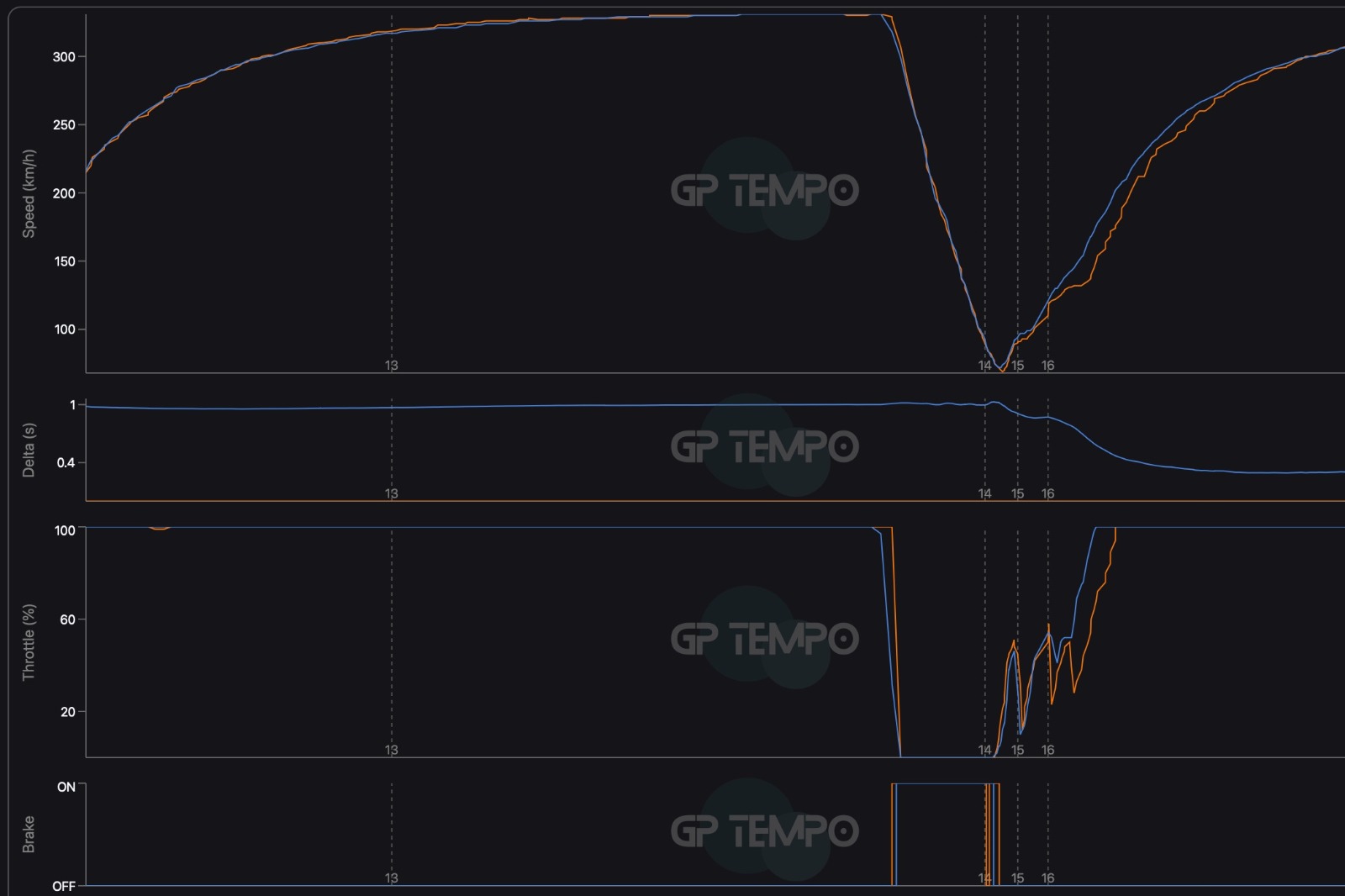In the Las Vegas night, against the background noise of American pensioners drip-feeding their life savings into the slot machines quarter by quarter, Lando Norris cashed in the experience gained through his early-season struggles to hit the jackpot at the crucial moment.
That’s McLaren team principal Andrea Stella’s view – well, perhaps not of the shovelling of small change into grasping engines of late capitalism, but certainly of a driver developing strong momentum at a crucial time. There was a time in the opening phase of this season, Bahrain and Saudi Arabia being cases in point, where Norris could almost be counted upon to fluff his lines in Q3.
Around the slippery asphalt of Las Vegas, a dislikeable circuit rendered all the more beastly by the onset of rain before qualifying, Norris wasn’t quite perfect but he delivered a lap clean and quick enough for pole on an evening where a seven-time champion could do no better than 20th. And all this at a venue where McLaren has struggled for the past two seasons and was not expected to shine.
Indeed, last year’s winner George Russell had set the pace in his Mercedes throughout the weekend until his power steering failed him in Q3. But as Kenny Rogers memorably warbled, you never count your money while you’re sitting at the table.
«I think what we see with the performance Lando has been able to consistently pull off over the recent races,» said Stella, «I would call it capitalisation of some important pieces of information that we gained in the first part of the season, in which for Lando not always has been possible to realise the full potential that he had available.
«This is mainly credit to Lando himself, that he really put a special effort in trying to understand what is the learning from the various aspects which are relevant for a Formula 1 driver. They can be technical, they can be approach to the event, there can be some aspects of how you approach a session, together with your engineers, and this has been what we call a holistic approach.»
Lando Norris, McLaren
Photo by: Glenn Dunbar / LAT Images via Getty Images
Third to first
Going into his final Q3 push lap, Norris was third fastest, over half a second up on struggling team-mate Oscar Piastri, but behind Max Verstappen and Carlos Sainz, who had just gone around a tenth faster than Norris, and were separated by but 0.039s.
Comparing the data from Verstappen’s and Sainz’s fast laps is an interesting exercise in itself and shows just how easy it was to leave time on the table in the tricky left-right-left of Turns 14-16 at the end of the Strip. Carlos was three tenths down on Max in the opening phase of this straight but had reduced that deficit to 0.054s at the apex of Turn 14. A spike of wheelspin for Sainz then opened the gap up again but it closed along the final straight, gaining a little momentum when Verstappen had to feather the throttle very slightly in the kink before the finishing line.
Racing driver optics are always fascinating. «I thought it was a pole-worthy lap,» said Sainz of his own effort. «When I closed the lap, I saw myself in P1, and then I realised I was the first car across the flag.
«And yeah, maybe that was not going to last very long with these two guys coming behind, but it felt like a really good quali.»
«If you look at the whole of Q3, we were never up there,» was Verstappen’s take, with an almost audible harrumph, on a lap which was but milliseconds faster.
«We were never first, we were never quick enough, and to be second is fine.»

Comparing the data between Norris and Verstappen shows that Norris was ahead from the point where they crossed the line to start the lap. He was going 5km/h faster at the line, a gap which then narrowed – could be power unit characteristics, could be aero configuration – but the main damage was done by Max getting off the throttle and blending into the brake earlier for Turn 1. By the time they reached the point between the apices of Turns 1 and 2 they were travelling at virtually the same speed but now Max was 0.321s down.
Verstappen then recouped a little time as Norris struggled to get back on the throttle as cleanly, but Norris was able to carry around 10km/h more speed into the approach to Turn 3 despite lifting off the throttle a fraction more – again, a factor of differing car performance.
The gap then remained consistent at around four tenths until the approach to the squared-off right-hander at Turn 5, where Verstappen gained just over a tenth by getting off the throttle more progressively and blending into the brake later. Norris then released the brake and began to get on the throttle before backing out and reapplying the brake, but he still managed to start rebuilding his pace advantage by being slightly more aggressive on the throttle once he got the car straightened.
More slow-corner woe
It’s in the fiddly section between Turns 6 and 9 in the second sector where Verstappen’s lack of faith in his car really showed. Turn 6 is a relatively gentle sweep before it tightens up and Verstappen began lifting relatively early after the apex; not as sharply off the loud petal as Norris was, but enough, and sooner on the brake too. Norris was travelling almost 30km/h faster when he lifted off.

Between Turns 8 and 9 Norris was able to get back on the throttle more decisively for key fractions of a second, translating into a speed differential peaking at 11km/h – enough to build the gap to a full second at the apex of Turn 9.
From there the difference remained relatively steady for the remainder of sector two, despite Norris having to lift fractionally through Turn 10.
Norris leaves time on the table
«Even the pole position lap, there’s a pretty significant mistake in the last chicane, which cost several tenths of a second,» said Stella.
That’s a very accurate summary and you could see from the on-board footage just how much Norris had to wrestle with the car once into the corner, having lifted off the throttle later but blended into the brake earlier than Verstappen. This was just one of the areas of the track which moved drivers up and down the grid to deploy the adjective of the weekend, «sketchy».
Max’s tidier exit from Turn 16 – where Norris had to back out of the throttle twice to quell wheelspin – briefly gave him a 30km/h advantage which Norris didn’t erode until the approach to Turn 17. This slashed the gap to three tenths.

But Norris had already done the hard work at the start of the lap – and had put himself in a place to do so, being the only driver to get a quick lap in at the end as others were compromised by their run plans or, in the case of team-mate Piastri, yellow flags.
«They are difficult conditions even when the pace is there,» explained Stella.
«And in Q1 we saw that the pace for Lando was definitely strong, but he ended up towards the end of the session when the track was improving dramatically, in traffic, essentially, following a slow car. And this was determined in the pace.
«So the lap time we see is not a genuine reflection of the pace that was available in the car, but more the fact that for the last two laps he was following a slow car. And in fact, we definitely said the main learning from the session, we need to create a space.
«We can’t think like we overtake or solve the situation in any other way because we may limit our own performance too much.»

Lando Norris, McLaren
Photo by: Cristobal Herrera-Ulashkevich / via Getty Images
Hence Norris was released from the garage as soon as possible ahead of Q2 to be at the front of the queue to leave the pits, and a run plan evolved for Q3 to take him out of sync with the rest of the traffic. This started with a relatively late emergence onto the track, on intermediate tyres rather than the full wets which had been (unusually) favoured through the first two quali segments.
This brought its own perils because someone else could have crashed and brought out the red flag, but it enabled Norris to feel his way into the inters.
«It was tricky,» he said, «especially because there’s always a risk of yellow flags and also red flags here. I’m surprised there weren’t more, in a way, because of the difficulty today.
«But we weren’t out near the front, so I was pretty happy to wait a little bit longer down the end of the pitlane and just have some cleaner air, stay out of the way of everyone else behind, try and avoid as much as possible the yellow flags and take that risk element out of it and just let me put some laps in, build the confidence in the car.
«I think I was the only one who got one more lap at the end of the run, and that worked out perfectly. We were still pretty good before, and then to get the timing of it – I think we did like push-push, push-cool-push or something at the end.
«So, yeah, just making sure the battery was ready, making sure the tyres were in good condition. And obviously, having that chance to go one more lap than everyone else worked out perfectly. Never easy on a day like today, but everything worked well.»
We want to hear from you!
Let us know what you would like to see from us in the future.
— The Autosport.com Team








